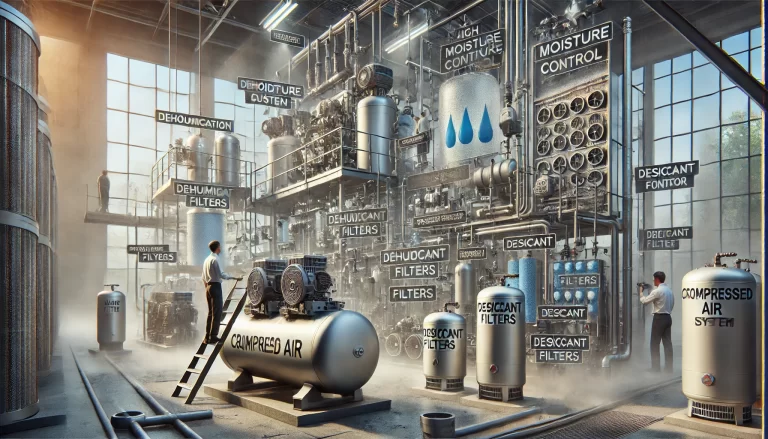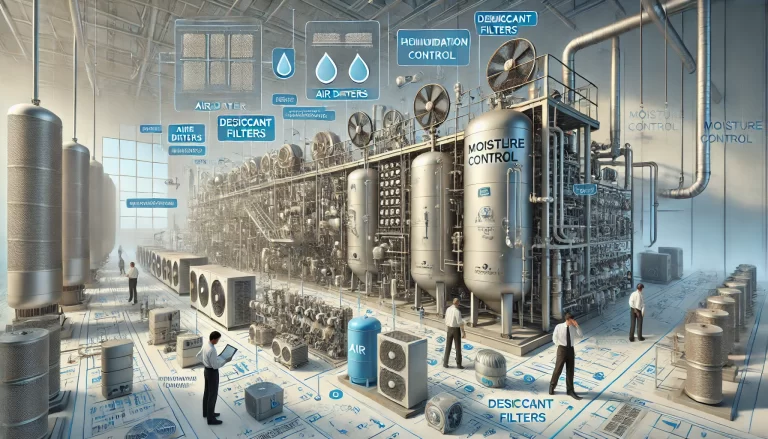1. Routine Inspection and Maintenance
1.1 Daily Instrument Patrol
Instrument technicians should follow a pre-defined inspection route twice per shift, based on instrument layout. During inspection, they should communicate with operators to understand operational status and troubleshoot issues proactively.
Checklist during patrol:
✅ Check whether local and control room readings are consistent
✅ Verify power supply (AC220V or DC24V) and pneumatic source stability
✅ Inspect insulation and heat tracing status
✅ Check for physical damage or corrosion
✅ Look for leakage at instrument-process interfaces
✅ Ensure instruments are structurally intact
1.2 Periodic Draining for Clogging Media
Applicable to instruments prone to condensation, crystallization, or sediment buildup (e.g., differential pressure transmitters, float level gauges).
Procedure Highlights:
Coordinate with process operators and switch loops to manual mode
Close isolation valves before draining
Drain to collection vessel (not directly to drain) to prevent contamination
Watch for damaged valves that cannot close fully — install blind flanges if needed
Restore transmitter and loop to automatic mode after normal indication resumes
🖼 Suggested Diagram: Differential pressure transmitter draining procedure flowchart
1.3 Winter Heat Tracing & Insulation Check
In cold seasons, ensure insulation is intact and heat tracing is operational. This includes electric and steam tracing for:
Flow meters (vortex, turbine, electromagnetic)
DP transmitters
Float level indicators
Control valves
Tips:
Check whether steam traps are operating correctly (continuous vs intermittent discharge)
Monitor electric heating circuits for voltage, indicator lights, and surface warmth
Avoid overheating materials with low boiling points to prevent gas-liquid phase transitions

2. Maintenance and Diagnostic Methods for Field Instruments
2.1 Typical Structure of Process Instruments
Most process instruments consist of:
Primary elements (sensors, transmitters)
Interconnecting components (signal cables or impulse lines)
Secondary instruments (display, controllers, DCS interface)
Failures are often reflected on secondary instruments (e.g., DCS), but root causes may lie in primary elements or connections. Therefore, a step-by-step isolation approach is required.
2.2 Step-by-Step Fault Diagnosis Process
2.2.1 Determine Whether Fault Originates Internally or Externally
Use one of the following simple diagnostic methods:
Short-circuit the input terminals (e.g., with a jumper).
If the reading drops to zero or shows room temperature, the instrument is likely working fine.
If abnormal readings persist, fault is likely internal.
Inject a known signal (e.g., via a simulator or potentiometer) and observe response.
2.2.2 Isolate Electrical Faults Inside the Instrument
🔍 Gently pull wiring to check for loose terminals or broken cables
🔍 Verify correct switch positions and connector fit
🔍 Set amplifier sensitivity to maximum and observe instrument response
🔍 Inspect mechanical parts (e.g., pointer mechanism, sliding contacts) for jamming
2.3 Field Fault Indicators and Interpretation
A systematic approach is necessary to understand:
The process condition (raw material parameters, load variation)
Instrument design (configuration, signal type, loop impedance)
Historical data (trends, curves from DCS or chart recorders)
Common symptoms and interpretations include:
| Symptom | Possible Cause |
|---|---|
| DCS trend flatlines | Signal loss, sensor disconnection |
| Sudden jumps in reading | Fault in signal processing or sensor malfunction |
| Large deviation between local and DCS reading | Signal cable fault, ground loop, calibration error |
| Output shows oscillation | PID tuning issue, mechanical looseness, process instability |

3. Online Instrumentation Fault Diagnosis by Parameter Type
Chemical process instrumentation typically monitors four main parameters: flow, level, temperature, and pressure. Each has distinct failure modes and troubleshooting strategies.
3.1 Flow Control Instrumentation
Common Fault Scenarios & Diagnoses
| Symptom | Possible Causes | Diagnostic Steps |
|---|---|---|
| Reading stuck at minimum | – Impulse line clogged (e.g., for orifice plate) – DP transmitter leak – Mechanical meter gear jammed | Check sensor condition and impulse line pressure |
| Reading stuck at maximum | – Transmitter signal saturation – Valve fully open – Controller output maxed out | Switch to manual mode and observe valve behavior |
| Frequent signal oscillation | – Improper PID settings – Air entrapment – Flow turbulence | Change to manual mode; if oscillation stops, tune PID or check measurement loop |
3.2 Level Control Instrumentation
Common Fault Scenarios
| Symptom | Root Causes | Notes |
|---|---|---|
| Reading stuck high/low | Level transmitter failure or signal cable break | Check local vs DCS readings |
| Mismatch with local gauge | Sealing fluid loss in DP type level meter | Refill seal fluid, check migration settings |
| Frequent fluctuation | Small tank size or unstable inflow | Evaluate process load and controller parameters |
3.3 Temperature Instrumentation
Special Considerations
Most temperature loops are electrical (thermocouple/RTD) and feature large time delays
Sudden value jumps often indicate cable disconnection or sensor damage
| Symptom | Potential Fault |
|---|---|
| Sudden high/low value | Sensor or signal wire failure |
| Continuous vibration in reading | PID setting issue or thermal noise |
| Slow, wide fluctuations | Often process-driven; check load stability |
| Valve moves but signal unchanged | Diaphragm actuator failure (air leak) |
3.4 Pressure Control Instrumentation
Diagnosis Logic
| Symptom | Likely Root Cause |
|---|---|
| No change despite process change | Impulse line blockage or transmitter fault |
| Frequent fast oscillation | Poor PID tuning or process volatility |
| Dead zone effect in DCS | Check signal transmission chain and impulse integrity |
✅ Summary of Troubleshooting Approach
Switch loop to manual mode to isolate control valve from automation
Compare local and DCS readings to validate signal integrity
Manipulate process slightly to observe instrument response
Use logic flow: Sensor → Wiring → Transmitter → Controller → Valve

4. DCS System Fault Handling Strategies
Distributed Control Systems (DCS) are the core of modern process automation. When DCS malfunctions, rapid and accurate intervention is essential to ensure plant safety and avoid shutdowns.
4.1 Classification of DCS Faults
| Fault Type | Typical Symptoms | Implications |
|---|---|---|
| Operator Station failure | Black screen, unresponsive HMI | Loss of monitoring, but field control may persist |
| Controller (CPU) fault | No output, loss of control loop | Affects specific unit or loop |
| Power supply fault | Total blackout of cabinet or module | Critical emergency, may trigger interlocks |
| Network failure | Communication interruption between I/O and central system | May cause data loss or misoperation |
4.2 Response Measures for Typical DCS Faults
1. Complete Operator Station Failure
Switch to local/manual backup control if available.
Notify operations to avoid major adjustments.
Attempt HMI reboot; if unsuccessful, initiate controlled shutdown.
2. Partial Station Failure
Use alternative stations to continue operations.
Suspend any non-essential system operations.
Begin troubleshooting (check software, power, cables, RAM).
3. Controller or Power Module Failure
For auxiliary equipment: switch to manual control or shut down subsystem.
For critical loops: force hand operation at the valve level.
Replace or reconfigure the failed controller module.
4. Protection System Controller Failure
Immediate replacement is required.
If not restorable, shut down the plant per interlock protocol.
4.3 Best Practices for System Integrity
🔒 Access Control: Limit configuration changes and enforce approval for software updates
💾 Data Backup: Maintain regular backups of all controller programs and operator HMI graphics
🔄 Software Testing: Prohibit uploading untested programs into live systems
🛡 Anti-virus Protection: Implement targeted cybersecurity for DCS nodes and operator stations
✅ Summary
A robust DCS fault response plan includes:
Backup operation readiness (manual or secondary loop)
Trained response team
Isolated troubleshooting procedures
Timely restoration or controlled shutdown strategy

5. Control Valve Failure Modes and Diagnostic Guidelines
Control valves are critical components in chemical process control loops. Valve failures often lead to serious process instability, production loss, or even safety shutdowns. This section details fault identification, diagnostic practices, and real-world cases.
5.1 Key Inspection Points
| Component | Common Issues |
|---|---|
| Valve body | Erosion, internal corrosion due to high differential pressure or corrosive media |
| Valve seat | Leakage from wear or improper installation; thread corrosion |
| Valve plug/stem | Cavitation damage, wear, loose connection, stem bending |
| Packing & Seals | PTFE packing aging, lubricant hardening, gasket leakage |
| Actuator diaphragm | Rupture or fatigue failure in pneumatic actuators |
5.2 Typical Fault Cases and Analysis
Below is a selection of common failure modes with corresponding causes and corrective actions.
Case 1: Valve Fails to Open in Liquid Level Control Loop
Symptoms: High level indication, large controller output, valve unresponsive
Diagnosis: Open actuator – no movement. Disassemble positioner – amplifier diaphragm ruptured.
Fix: Replace diaphragm → Restore auto mode.
Case 2: Sticky Feedback Rod in Positioner
Symptoms: Large level oscillation, valve stuck in position
Diagnosis: Rod rusted and seized → No feedback action → Control loop instability
Fix: Disassemble, clean, lubricate rod → Valve resumes smooth movement
Case 3: Control Valve Jammed Due to Carbon Build-Up
System: Natural gas pressure regulation
Cause: Long operation under stable load, carbon deposits between stem and guide sleeve
Fix: Increase signal + apply mechanical force to close valve → Clean during shutdown
Case 4: Broken Valve Plug or Stem
Symptoms: Control ineffective, valve feels light when handwheel moved
Fix: Disassemble → Plug-stem separation confirmed → Weld and reinforce new connection
Case 5: Excessive Packing Compression
Symptoms: Valve cannot move after maintenance
Cause: Over-tightened packing during shutdown maintenance
Fix: Loosen packing gland slightly to allow free movement
Case 6: Butterfly Valve Oscillates at Constant Amplitude
Cause: Clogged nozzle in positioner’s double-nozzle flapper amplifier
Fix: Clean throttle hole → Increase balancing pressure → Stabilize valve
5.3 Positioner-Specific Failures
| Issue | Probable Cause | Solution |
|---|---|---|
| No valve action despite input signal | Solenoid fault or incorrect supply pressure | Replace solenoid; check air line |
| No output pressure | Clogged nozzle or faulty relay | Clean nozzle with 0.2 mm wire; replace relay |
| Delayed valve response | Diaphragm leakage or fatigue | Check actuator and replace membrane |
✅ Summary Recommendations
Conduct routine preventive checks on all moving parts and feedback elements
Standardize spare part replacement schedules (diaphragms, O-rings, gaskets)
Establish a failure database with historical failure types and repair logs
Include valve functional checks during commissioning and shutdowns

6. Instrument Coordination During Plant Startup and Shutdown
Proper coordination between instrumentation and process operations during startup or shutdown is essential to avoid system damage, measurement drift, or control errors.
6.1 Instrument Support During Plant Shutdown
✅ Key Tasks:
Communicate closely with process teams to align shutdown timing and equipment availability
Safely remove instruments from pipelines or vessels undergoing mechanical maintenance
Cut power/air supply before disassembly
Install blind flanges immediately after instrument removal
Protect electrical connections with insulation tape or proper cable caps
Drain pressure ports carefully to prevent blowouts from trapped media
Remove instruments with interlocks only after switching to manual or bypass mode
Tag and label all dismantled instruments with unique IDs to prevent re-installation mix-ups
6.2 Instrument Preparation for Startup (Re-commissioning)
🔄 General Guidelines:
Reinstall instruments per tag number
Check all electrical/pneumatic connections before energizing
Flush and purge pneumatic systems to remove dust, rust, or oil
Check DCS signal consistency: transmitter → DCS input → control output → valve movement
⚠ Special Preparations by Instrument Type
| Instrument | Startup Precaution |
|---|---|
| DP transmitters (sealed type) | Refill isolation fluid to correct migration height |
| Steam flow meters (orifice type) | Open after condensate fully forms in impulse lines |
| Pneumatic valves | Leak test with soap solution at all joints |
| Rotameters (metal tube type) | Open bypass valve first to remove debris, then slowly open inlet/outlet |
| RTDs/Thermocouples | Confirm polarity (A/B/C for RTDs; +/– for TCs) |
🛠 Functional Testing (Loop Check)
Calibrate transmitter signal (e.g., 4–20 mA) and verify against controller display
Match control signal output with valve actual position
Perform simulation if process not yet live
✅ Summary Best Practices
Avoid last-minute installation: prepare instruments as early as possible during commissioning
Document pre- and post-startup status of critical instruments
Always validate interlock logic before switching to auto-control
Use bypass modes cautiously, and ensure valves are properly sequenced (inlet vs outlet)
